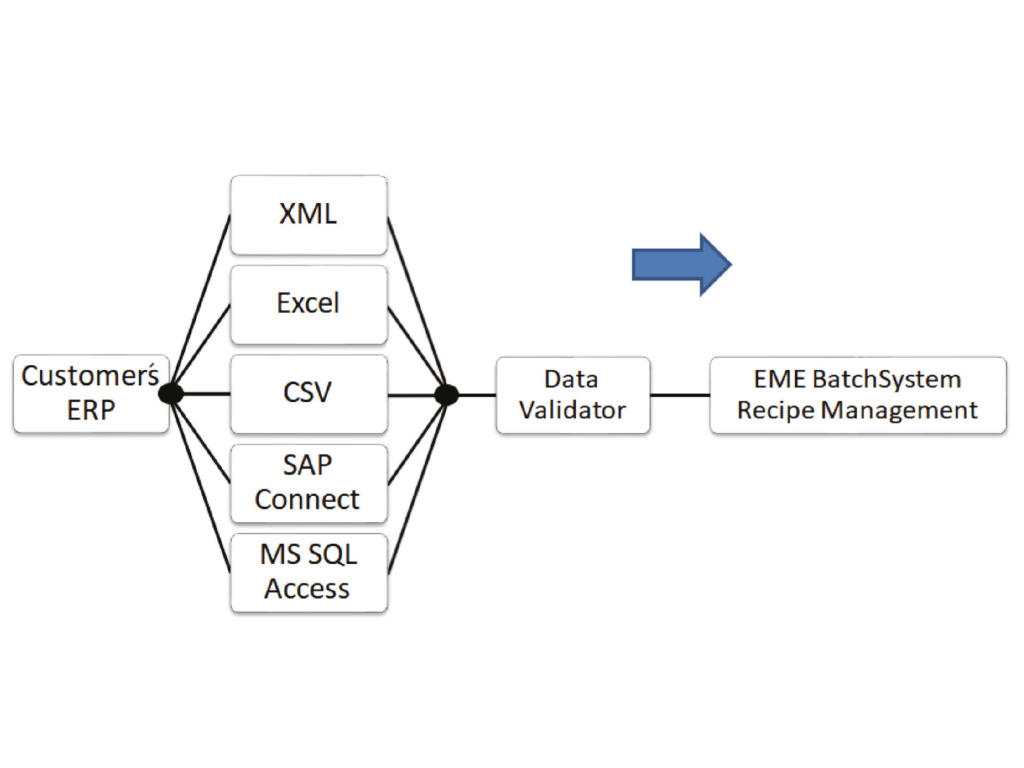Data exchange with other systems has always been a highlight of the EME BatchSystem.
With the latest major release, EME BatchSystem expands its ability to easily exchange data with any enterprise resource system (ERP) system using EME’s new Recipe DATA Connector.
The goal of this new interface is to facilitate all work around the recipe creation for the customer.
Primary data
Customers can continue to handle their raw materials as usual in their ERP system and then transfer a newly-created recipe via the connector to the EME BatchSystem. They only have to take care of the recipe data, which is of primary importance for batch production. Recipe data that is plant- or scale-specific, but still important for the overall recipe, is generated from optimised standard values when the data is loaded into the BatchSystem.
For most batch plants, in addition to a set of co-ordination data, the customer simply transmits the raw material name and the desired setpoint value for any component, with the specification of tolerances always being optional.
Transfer types
Actually, the following transfer types are implemented:
- Direct access to SAP [standard assessment procedure] (EME delivers a full set of SAP objects for the communication and a detailed description, how they can be implemented in the customer’s SAP).
- MS SQL Server Connection to the EME BatchSystem database using a secure TCP/IP channel.
- File data exchange over a secure FTP access using the following file types: XML, CSV and Excel (XLSX).
EME provides a comprehensive and detailed manual including a description of all interface types, as well as the structure of the import data for the EME BatchSystem.
The EME Recipe DATA Connector automatically detects whether new data has arrived, loads it in, and after a comprehensive validation of the imported recipe data, it is transferred to Recipe Management. If data cannot be validated, it is discarded, and a message is displayed in the SCADA system.
If the validation was successful and a new recipe was created in the EME BatchSystem, this process is also indicated by a message in the SCADA system.
Alternatively, the customer can set the system so that the data is transmitted but not loaded in. Instead, a message about new data is sent to the SCADA system and the operators can manually perform the import via the EME recipe management.
Extended possibilities
The new extended interface is not limited to communication with an ERP system; it can be used with any other system, such as batch calculation programs, which can use this access to transfer recipe composition.
Image: Data flow of EME’s Recipe DATA Connector.


